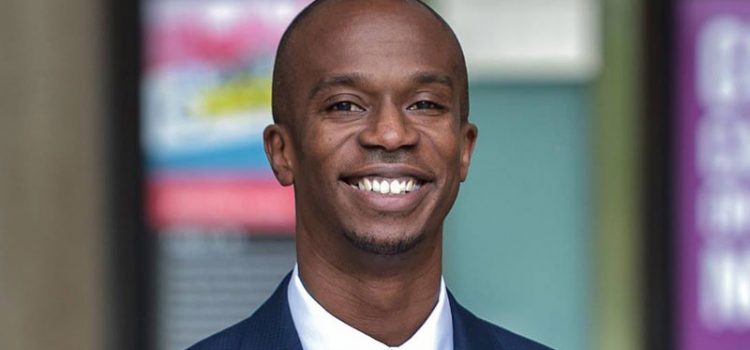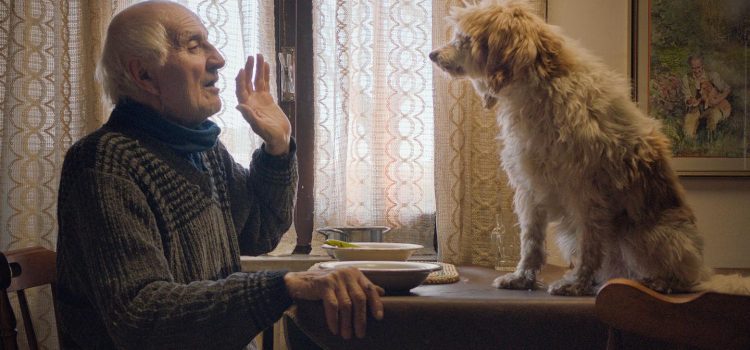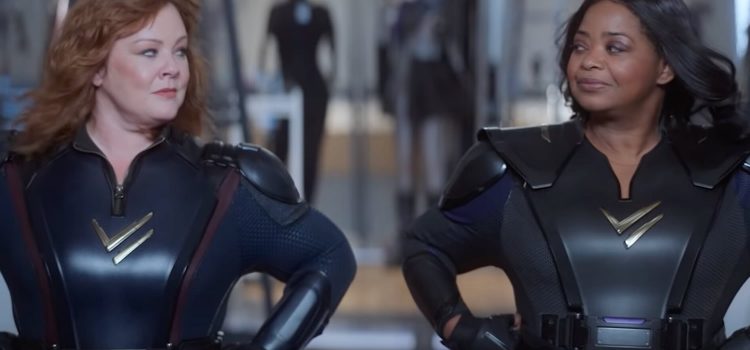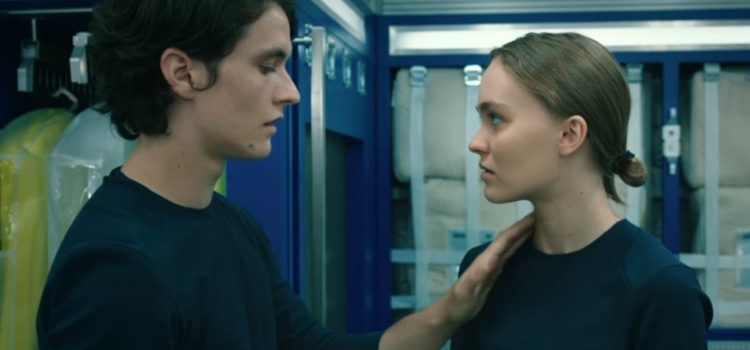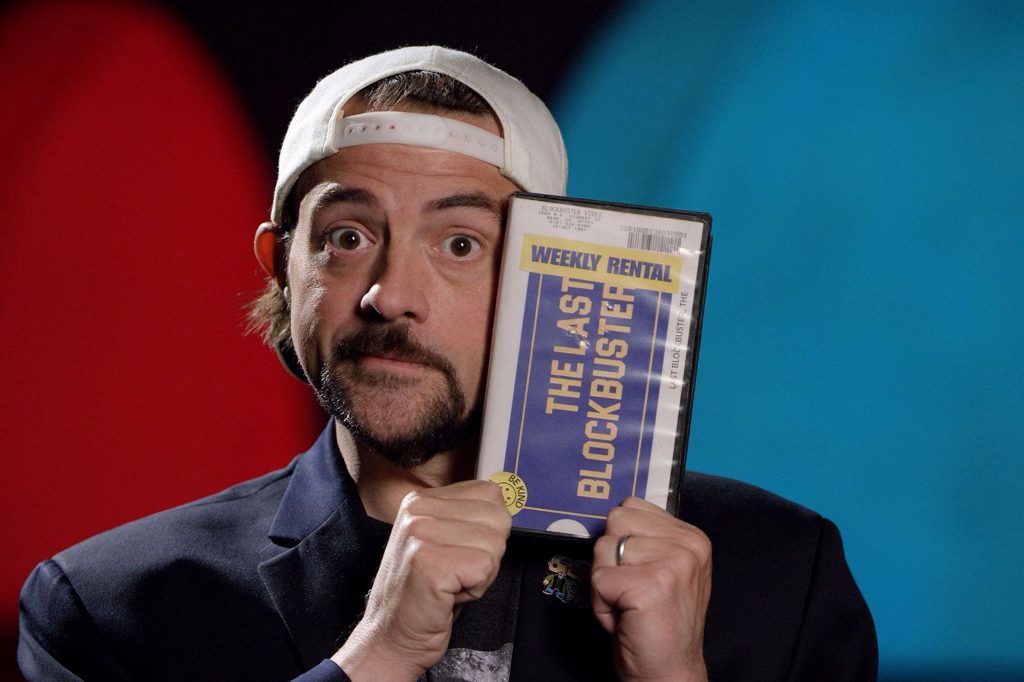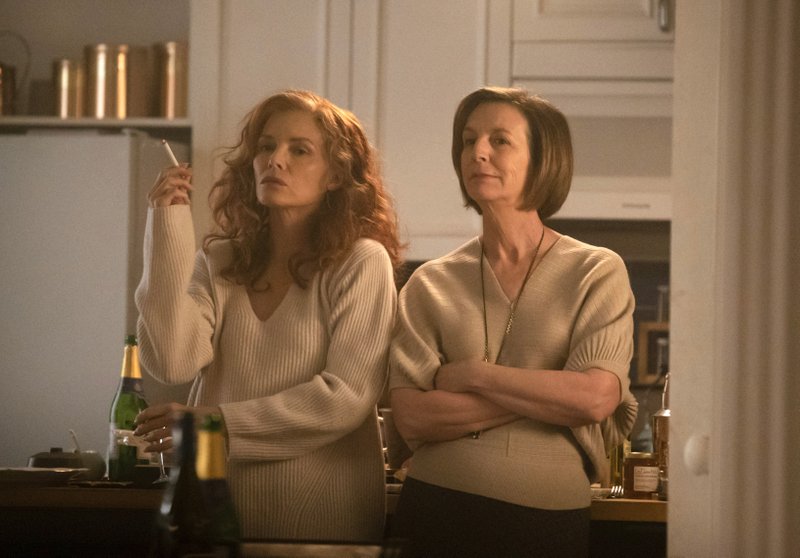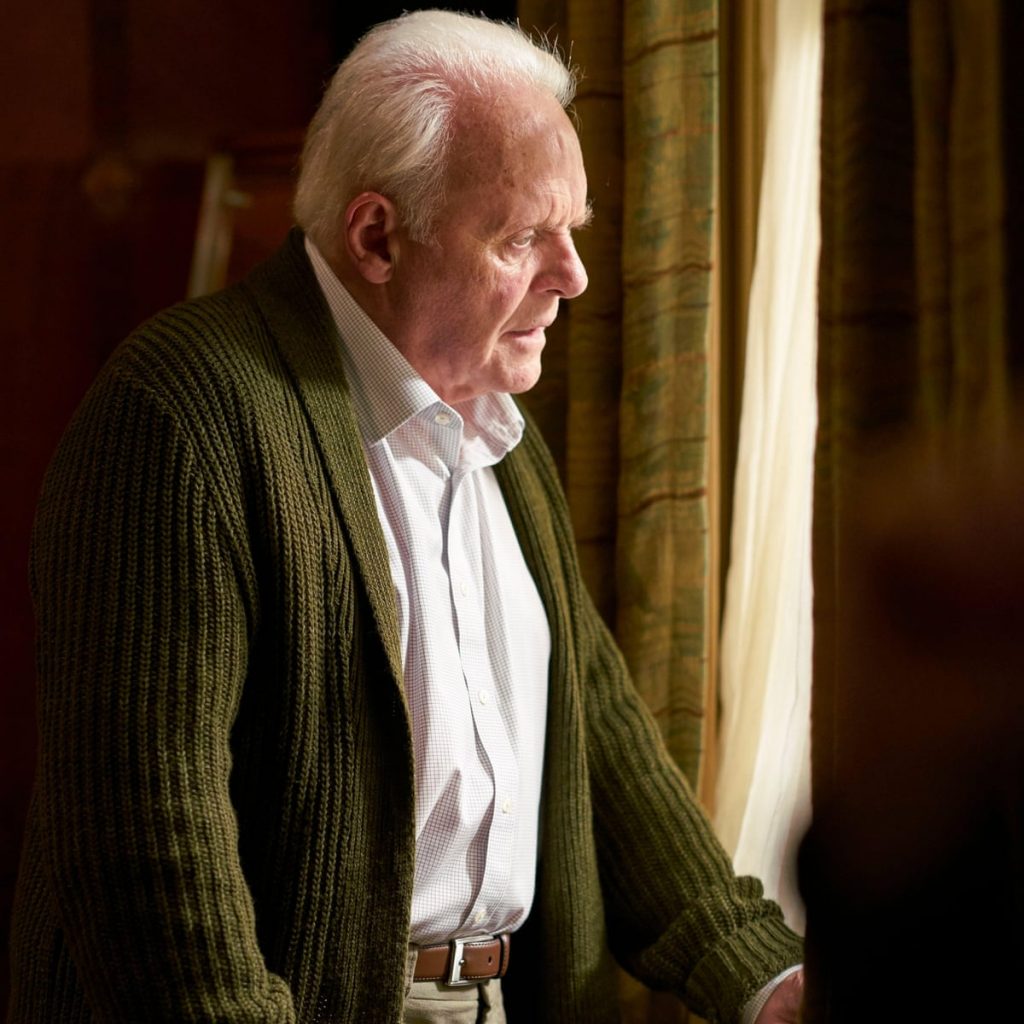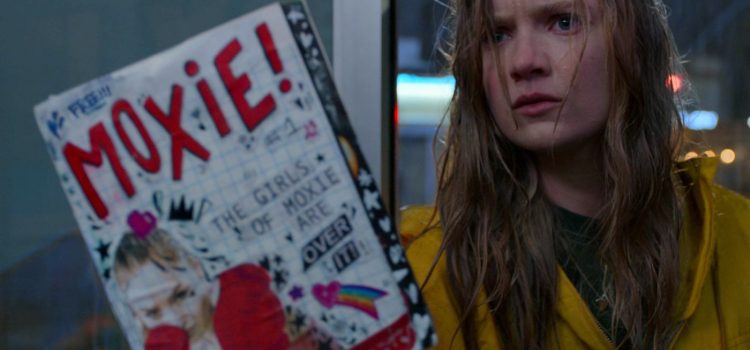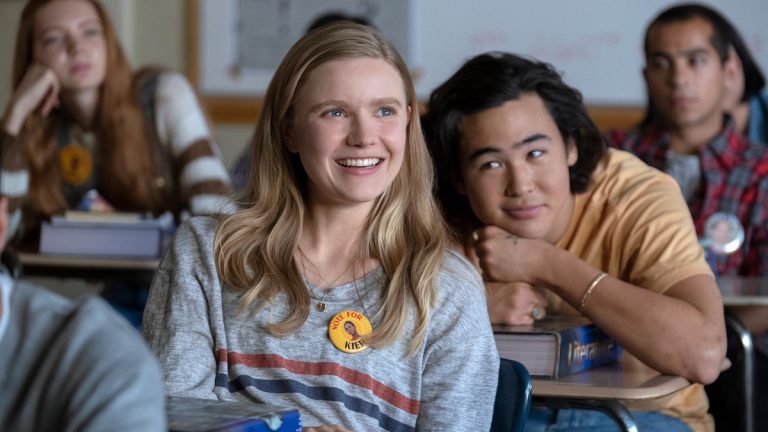Coleman discusses upcoming 103rd season and the challenges ahead
By Lynn Venhaus
Kwofe Coleman, who started at The Muny as a seasonal employee when he was 16, will become the theatre’s next president and CEO, succeeding Denny Reagan, who is retiring after 52 years.
Coleman begins the new position on Jan. 1, 2022. He is currently The Muny’s managing director, overseeing the organization, financial and business affairs. He will assume the role with more than a decade of extensive theatre management experience.
“I am honored and humbled by the opportunity to lead The Muny and serve a community that I love,” Coleman said. “The unparalleled history, remarkable resources and aspirational spirit that have yielded a century of success for The Muny are our foundation as we begin our second century.”
The Muny Board of Directors announced the decision Friday.
One of the premier musical theaters in the U.S., the 103-year-old St. Louis venue traditionally welcomes more than 350,000 patrons over its nine-week season in the nation’s largest and oldest outdoor theatre in Forest Park.
The opportunity to mold The Muny’s future is not one Coleman, 38, takes lightly.
“With great excitement, I look toward the future of a cultural institution that will take intentional steps to broaden and evolve our identity and relationships through both our art and our investment in this community,” he said.
He has been preparing for this opportunity for many years.
“It’s been a 22-year job interview,” he said. “The opportunities I have had to work in different departments and gain the necessary experience in a community I care about has motivated me to want to figure out our next chapter. ‘What else can I do?’ We have an opportunity to define what a cultural institution is. It’s an amazing opportunity.”
Coleman said he is eager to get to work.
“I have a lot of respect for what the people do here. I’m honored for this moment, and I’m so excited to do the work,” he said.
Coleman’s promotion has been met with local and national praise, with both the board chairman and retiring president describing it as a “perfect” choice.
“Thanks to Denny’s leadership, and the diligent stewarding of the selection process by the executive committee and full board, the perfect candidate has been chosen,” Muny Board Chairman James S. Turley said.
Reagan, who has been with The Muny since 1968, has served as president and CEO since 1991. He announced plans to retire in December.
He and Coleman have worked extensively alongside each other. In recent years, they have stood together near stage left, greeting patrons before each of the seven shows on summer evenings.
And like Reagan, Coleman started working at the Muny as a summer job when he was in high school. He was an usher, handing out programs and helping with patrons’ needs.
“Kwofe is a remarkably gifted leader who understands the institution at its core, and more importantly, its commitment to the St. Louis community,” Reagan said. “He will ensure The Muny’s future remains bright while offering a new perspective on how to lead our beloved theatre into its next century. Without question, he is the perfect choice.”
“Undoubtedly, Kwofe will ensure The Muny continues its commitment to accessibility, regardless of physical or socioeconomic limitations, while expanding the vital role we fill in our community,” said Turley, who is also the Second Century Campaign chairman.
Dave Steward, founder and chairman of World Wide Technology, the nation’s largest black-owned company, said Coleman was a national and local leader of rare passion and commitment for serving young people.
“His record reflects an accomplished innovator who is making education and training increasingly accessible for historically underserved communities through schools and the arts,” Steward said.
“From the Gospel of Mark we learn, ‘Whoever wants to be great among you must be your servant,’ and I am confident that Kwofe will lead with faith and humility. The Steward family, along with World Wide Technology, salute The Muny on choosing Kwofe as their next leader,” said Steward, a Muny board member.
World Wide Technology and the Steward Family Foundation became the first overall season sponsor in the history of The Muny in 2014. They were to be the 2020 Season Presenting Sponsor but instead continued as the online season presenting sponsor with a leadership gift.
Coleman is recognized both locally and nationally as a strong force in theatre operations and currently serves as the president-elect of the National Alliance for Musical Theatre.
Betsy King, NAMT executive director, noticed the symmetry of Reagan, a former president, passing the torch to Coleman.
“I can say with both excitement and confidence that Kwofe will be a charismatic, insightful leader for The Muny. He will respect the past while also moving the organization into a strong, vibrant future. The Muny is in excellent hands!” she said.
Coleman was a 2018 Fellowship advisor for the DeVos Institute of Arts Management at the University of Maryland.
“The Muny has enjoyed a remarkably stable and strong leadership that has allowed the organization to move from strength to strength. Appointing Kwofe Coleman as the new president and CEO ensures leadership continuity. Kwofe brings his own insights and talents to the position and will lead The Muny to even greater heights in the years to come,” said Michael Kaiser, DeVos Institute of Arts Management chairman and Kennedy Center president emeritus.
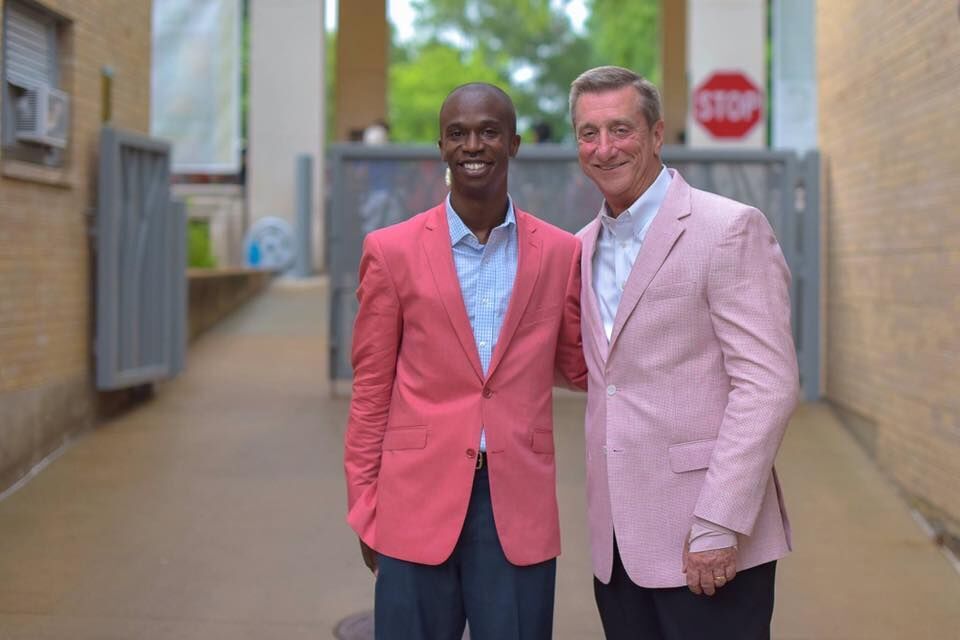
103rd Season
Because of the public health crisis due to the coronavirus pandemic, the 102nd season was cancelled, and the line-up was transferred to the 2021 season. Even though season ticket sales were announced in March, the current health landscape, best practices and all available information must indicate that a season is possible.
A final decision will be made next month, Coleman said.
“We’re eager to come back, to gather and have the shows, but we have to be safe and be cleared to do so by the health department and the labor unions,” he said. “We’re looking at every angle. We might have to have a slightly reduced season, a socially distanced scenario. We’ll do something. How we will do it has to be figured out.”
Coleman said meetings continue to take place, consulting with the city and medical experts on the COVID-19 regional numbers and mitigation efforts. He said they have watched what the St. Louis Cardinals, St. Louis Blues and other local institutions have done in their altered re-openings.
“We’ve had a lot of great conversations. We’re only going to be together again by working together,” he said.
The upcoming season, announced in December, is to start later in July and then run through September, a shift from the usual June to August schedule, “should conditions allow.”
The seven shows are: Seven Brides for Seven Brothers (July 5 – 11), Disney and Cameron Mackintosh’s Mary Poppins (July 14 – 22), Smokey Joe’s Cafe (July 25 – 31), The Sound of Music (August 3 – 9), Sweeney Todd (August 12 – 18), On Your Feet! (August 21 – 27) and Chicago (August 30 – September 5). Three – Sweeney Todd, Smokey Joe’s Café and On Your Feet – are Muny premieres.
In the meantime, the activities at #1 Muny Drive continue. The stage is being installed, construction is on track and preparations to return are underway.
The Muny is currently undergoing a multi-year major renovation project that was announced in October 2018. Phase 3 started in September, focused on backstage support spaces. The Muny’s aging 11.5-acre campus needs upkeep and maintenance.
The new Emerson Artists’ Building will house dressing rooms, the wig shop, hair and makeup departments and wardrobe. Renovations are planned for the costume shop, production and general offices, rehearsal space, craft and scenic room, painter and carpenter areas, and the sewer and plumbing infrastructure. The capital campaign has raised $85 million so far.
The first two phases focused on rebuilding the state-of-the-art James S. McDonnell stage
Summer of 2020
The Muny announced in May that a modified season of 5, not 7, shows would take place beginning in July only if local health experts and officials deemed it safe, but on June 8, the decision was made not to move forward.
After that sad news, the Muny pivoted to an online season, a first in its 102-year history. They aired the live Muny Magic concerts at The Sheldon, never before made available to the public, and created a new series, “The Muny 2020 Summer Variety Hour Live!” This one-of-a-kind, free online endeavor was packed with performances by Muny artists across the country and dancers performing outside on the grounds.
Because of the online season, The Muny was able to employ several members of its typical summer staff, including trades people, performers, artists and musicians.
With viewers from 22 countries, the total estimated attendance for the free 10-show summer season was 189,582. This number represented a record-breaking first in The Muny’s live-streaming history, and is an aggregated estimate based on YouTube analytics.
“While this season was anything but ordinary, the support from our viewers has been nothing short of extraordinary,” Reagan said.
“My heart was transported back to so many magical summer nights past,” said Mike Isaacson, artistic director and executive producer of The Muny.
“I am so grateful to everyone in the Muny family who worked on and created these 10 streams,” Isaacson said. “It was a remarkable collaboration in so many ways, and in this really challenging time, these shows allowed us to create, to celebrate and to be together. We’re all very grateful.”

Coleman’s biography
Coleman joined The Muny full time in 2008 as a staff accountant, helping to manage the finances, accounting and payroll for its multimillion-dollar annual budget.
In the decade preceding it, he performed a variety of roles, including house manager.
In 2011, Coleman formed The Muny’s first digital communications department, reconstructing its internet presence and social media identity while also dramatically increasing the theatre’s internet sales stream, national presence and forming connections with nextgeneration audiences.
He was promoted to director of marketing and communications in 2014, where he managed branding and marketing efforts through its 2018 centennial season. During this time, Coleman was also key in the creation of both The Muny’s Second Century Strategic Plan and the $100 million Second Century Capital Campaign.

Following the 2018 season, Coleman was named The Muny’s managing director, responsible for managing the business functions while working with Isaacson, to embrace and articulate the artistic and institutional vision.
In St. Louis, he is an active contributor, serving on the St. Louis University High School Board of Trustees, Cor Jesu Academy Advisory Council, Common Circles Advisory Council and as a proud founding board member of Atlas School.
Coleman is an alumnus of St. Louis University High School, Class of 2001, and earned a bachelor’s degree in English from Emory University in Atlanta.
He is a first-generation American. His parents migrated here from the Republic of Ghana in the mid-1970s and settled in Bellefontaine Neighbors. He has two sisters, both doctors, who attended Harvard and Duke universities, and locally, Cor Jesu Academy. He said his parents prized education and his father worked side jobs to send his children to private schools.
Coleman said his parents appreciated the arts and culture, and that was handed down to their three children, to make sure they were well-rounded.
“Art was natural to me and I appreciated it,” Coleman said.
He also serves on the board of directors for the Saint Louis Club, as well as other various social service organizations. During the 2020 holiday season, Coleman served as executive producer for “A New Holiday,” a short film musical set in St. Louis created by LIFE Creative Group.
He is a 2015 recipient of the St. Louis American’s Salute to Young Leaders Award and was named to the 2020 St. Louis Business Journal 40 under 40.

For more information about The Muny, visit www.muny.org.
Season tickets can be purchased online at muny.org or by phone by calling (314) 361-1900. Currently, the box office in Forest Park is closed to the public.

Lynn (Zipfel) Venhaus has had a continuous byline in St. Louis metro region publications since 1978. She writes features and news for Belleville News-Democrat and contributes to St. Louis magazine and other publications.
She is a Rotten Tomatoes-approved film critic, currently reviews films for Webster-Kirkwood Times and KTRS Radio, covers entertainment for PopLifeSTL.com and co-hosts podcast PopLifeSTL.com…Presents.
She is a member of Critics Choice Association, where she serves on the women’s and marketing committees; Alliance of Women Film Journalists; and on the board of the St. Louis Film Critics Association. She is a founding and board member of the St. Louis Theater Circle.
She is retired from teaching journalism/media as an adjunct college instructor.

